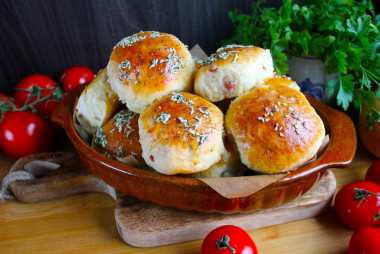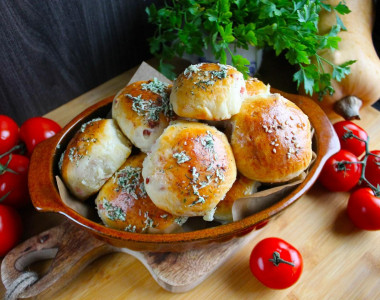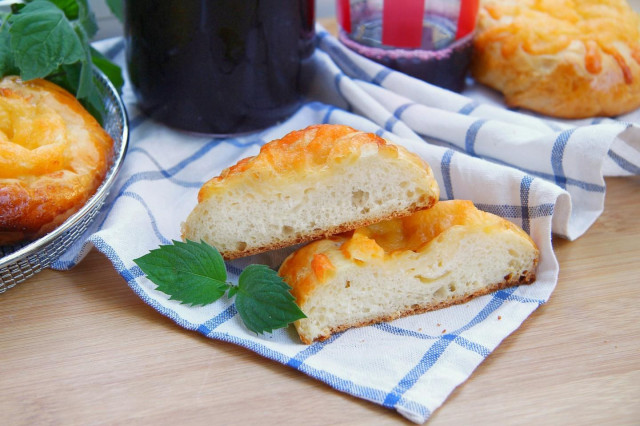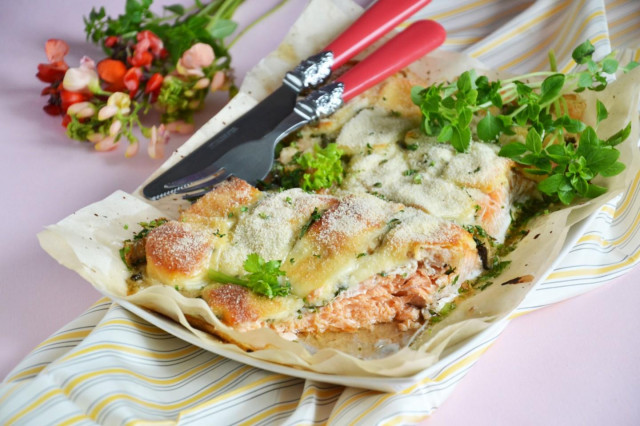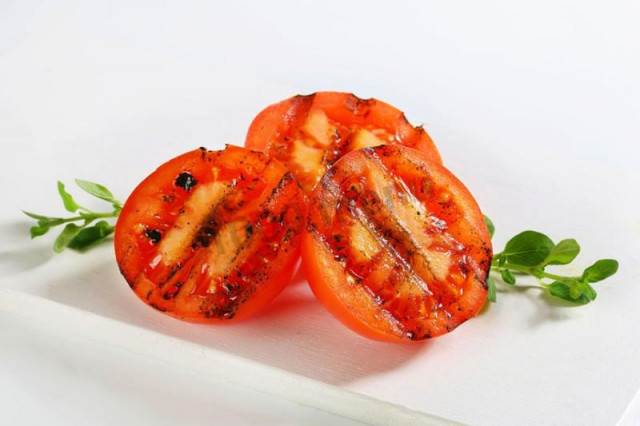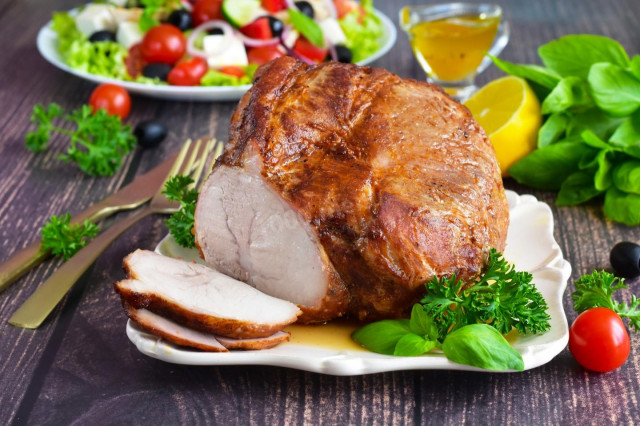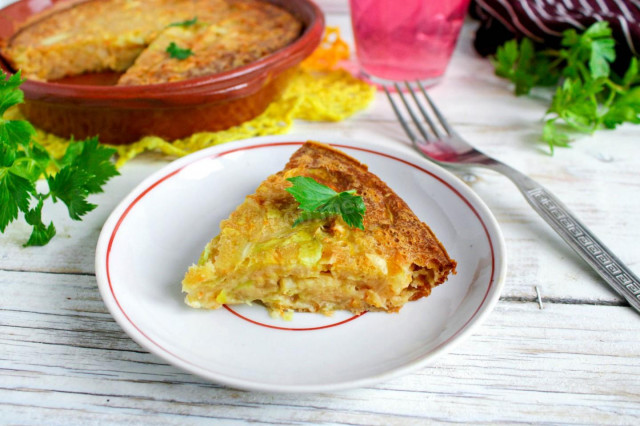Composition / ingredients
Step-by-step cooking
Step 1:
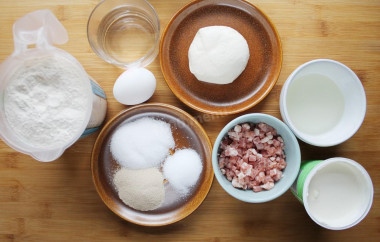
How to make buns with cheese from yeast dough? First of all, prepare all the necessary products according to the list. You may need more or less salt, as well as flour. Which cheese is better to use for buns? I usually take mozzarella or any hard cheese. I was making ham dough buns. You can make them from regular yeast, without fillers.
Step 2:
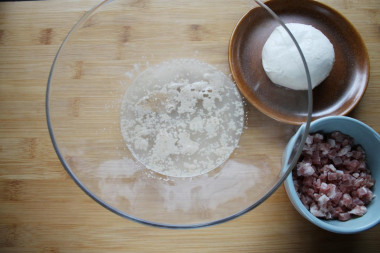
Prepare the sourdough, to do this, combine warm water, dry yeast and sugar in a deep container. Stir everything well and leave for 10-15 minutes.
Step 3:
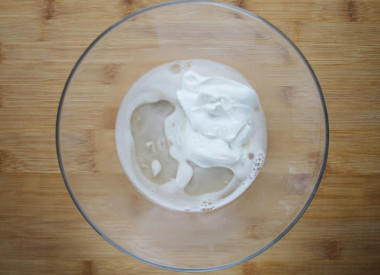
Add vegetable oil, salt and sour cream, mix everything thoroughly.
Step 4:
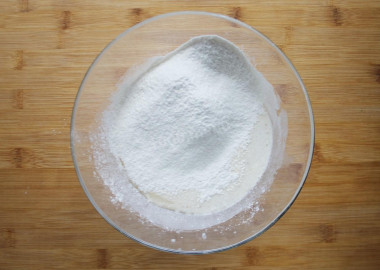
Gradually begin to introduce the sifted flour. Please note that you may take more or less flour than I do. Be guided by the consistency of the dough.
Step 5:
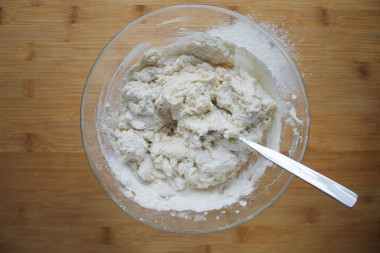
Stir first with a spoon and then with your hands. The dough should not be very dense and slightly sticky to the hands.
Step 6:
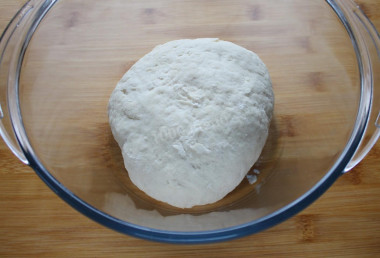
Knead the dough for about 3-5 minutes. Lubricate a deep container with vegetable oil, put the dough into it. Cover the bowl with a towel and leave in a warm place to rise for 50-60 minutes.
Step 7:
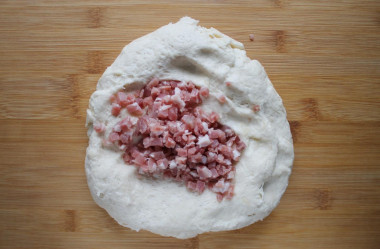
If you, like me, decided to make more interesting buns, proceed to this stage. If not, skip it and go straight to the next step. Cut the ham into small cubes. Make a small notch in the dough and add the ham. Knead everything well, add a little flour if necessary. You will get a dough mixed with slices of ham.
Step 8:
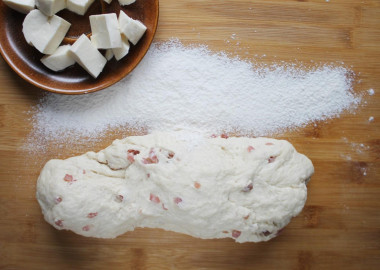
Cut the cheese into small pieces.
Step 9:
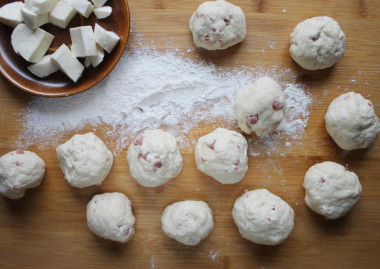
Divide the dough mixed with ham (or not mixed - depends on which one you chose) into 12 identical parts.
Step 10:
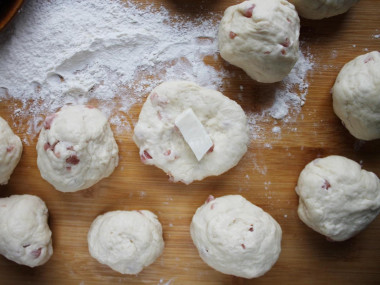
Make a shallow notch in each piece of dough, send the cheese into it.
Step 11:
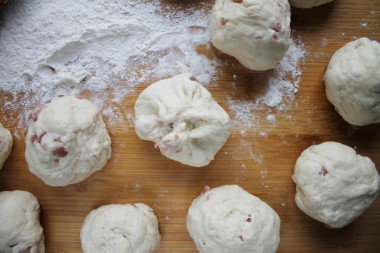
Pinch well so that the cheese is inside the bun. Do the same with all the dough and cheese.
Step 12:

Cover the form with parchment and put all the balls seam down at a small distance from each other. Cover with a towel and leave for 30 minutes.
Step 13:
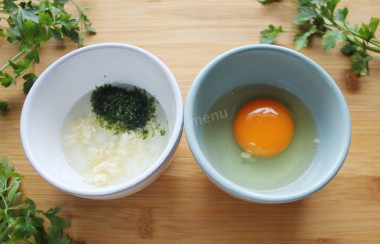
At this time, prepare an egg and a mixture of vegetable oil, garlic and herbs for lubrication.
Step 14:
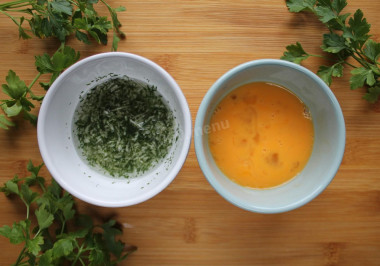
Shake the egg well, and mix the butter, grated garlic and herbs.
Step 15:
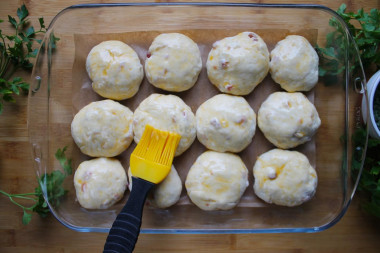
Lubricate the buns with an egg using a silicone brush.
Step 16:
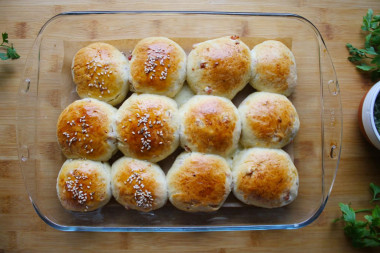
Send it to the preheated oven for 25-30 minutes to bake. Attention! The baking time and temperature depend only on your oven. You may need a little more or, conversely, a little less time from the time specified in the recipe! After 15 minutes of baking, I smeared half of the portion with egg again and sprinkled with sesame seeds (you can use flax seeds). Then I sent the buns back to the oven.
Step 17:
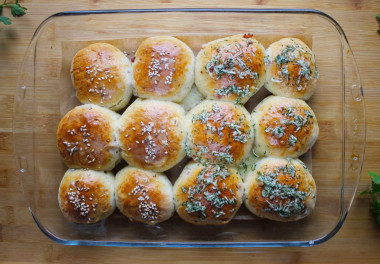
After I took the baking sheet out of the oven, and smeared the remaining buns with a mixture of garlic and herbs. Cover the finished pastries with a towel for 10 minutes.
Step 18:
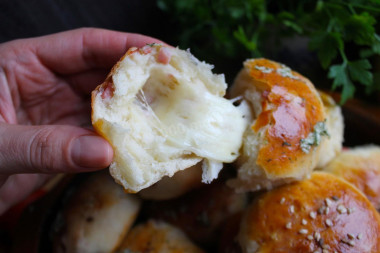
While the cheese is not cold, the buns are amazingly delicious!
Bon appetit!
The liquid in which yeast is bred should be pleasant to the touch, no higher than 40 degrees. Why is this important? In a warm environment, yeast is well activated, in a hot one it will die, and in a cold one it simply will not work. To avoid unpleasant surprises, check the yeast before mixing with the rest of the ingredients. Pour a little warm milk into a bowl, stir in the yeast. Cover the bowl with a kitchen towel and put it in a warm place without drafts for 10-15 minutes. During this time, a foam yeast cap should appear on the surface of the sponge. If this did not happen, then the fermentation process has not started (the yeast is overdue or spoiled). In this case, it is worth taking other yeast, otherwise baking will not work.
Dry yeast can be replaced with fresh pressed yeast, based on the proportion of 1:3. That is, for 1 gram of dry yeast required by the recipe, you need to take 3 grams of fresh.
Be prepared for the fact that you may need more or less flour than indicated in the recipe. Focus not on the amount of flour, but on the desired consistency of the dough. To avoid mistakes, read about flour and its properties!
Caloric content of the products possible in the composition of the dish
- Sour cream with 30% fat content - 340 kcal/100g
- Sour cream of 25% fat content - 284 kcal/100g
- Sour cream with 20% fat content - 210 kcal/100g
- Sour cream of 10% fat content - 115 kcal/100g
- Sour cream - 210 kcal/100g
- Chicken egg - 157 kcal/100g
- Egg white - 45 kcal/100g
- Egg powder - 542 kcal/100g
- Egg yolk - 352 kcal/100g
- Ostrich egg - 118 kcal/100g
- Dutch cheese - 352 kcal/100g
- Swiss cheese - 335 kcal/100g
- Russian cheese - 366 kcal/100g
- Kostroma cheese - 345 kcal/100g
- Yaroslavsky cheese - 361 kcal/100g
- Altai cheese 50% fat content - 356 kcal/100g
- Soviet cheese - 400 kcal/100g
- Cheese "steppe" - 362 kcal/100g
- Uglich cheese - 347 kcal/100g
- Poshekhonsky cheese - 350 kcal/100g
- Lambert cheese - 377 kcal/100g
- Appnzeller cheese with 50% fat content - 400 kcal/100g
- Chester cheese with 50% fat content - 363 kcal/100g
- Edamer cheese with 40% fat content - 340 kcal/100g
- Cheese with mushrooms of 50% fat content - 395 kcal/100g
- Emmental cheese with 45% fat content - 420 kcal/100g
- Gouda cheese with 45% fat content - 356 kcal/100g
- Aiadeus cheese - 364 kcal/100g
- Dom blanc cheese (semi-hard) - 360 kcal/100g
- Lo spalmino cheese - 61 kcal/100g
- Cheese "etorki" (sheep, hard) - 401 kcal/100g
- White cheese - 100 kcal/100g
- Fat yellow cheese - 260 kcal/100g
- Altai cheese - 355 kcal/100g
- Kaunas cheese - 355 kcal/100g
- Latvian cheese - 316 kcal/100g
- Limburger cheese - 327 kcal/100g
- Lithuanian cheese - 250 kcal/100g
- Lake cheese - 350 kcal/100g
- Gruyere cheese - 396 kcal/100g
- Garlic - 143 kcal/100g
- Whole durum wheat flour fortified - 333 kcal/100g
- Whole durum wheat flour, universal - 364 kcal/100g
- Flour krupchatka - 348 kcal/100g
- Flour - 325 kcal/100g
- Granulated sugar - 398 kcal/100g
- Sugar - 398 kcal/100g
- Ham - 270 kcal/100g
- Beef ham - 133 kcal/100g
- Boiled ham - 282 kcal/100g
- Raw ham - 270 kcal/100g
- Ham sausage - 242 kcal/100g
- Vegetable oil - 873 kcal/100g
- Dried whole sesame seeds - 563 kcal/100g
- Shelled sesame seed - 582 kcal/100g
- Salt - 0 kcal/100g
- Water - 0 kcal/100g
- Fresh frozen soup greens in a package - 41 kcal/100g
- Greenery - 41 kcal/100g
- Dry yeast - 410 kcal/100g


